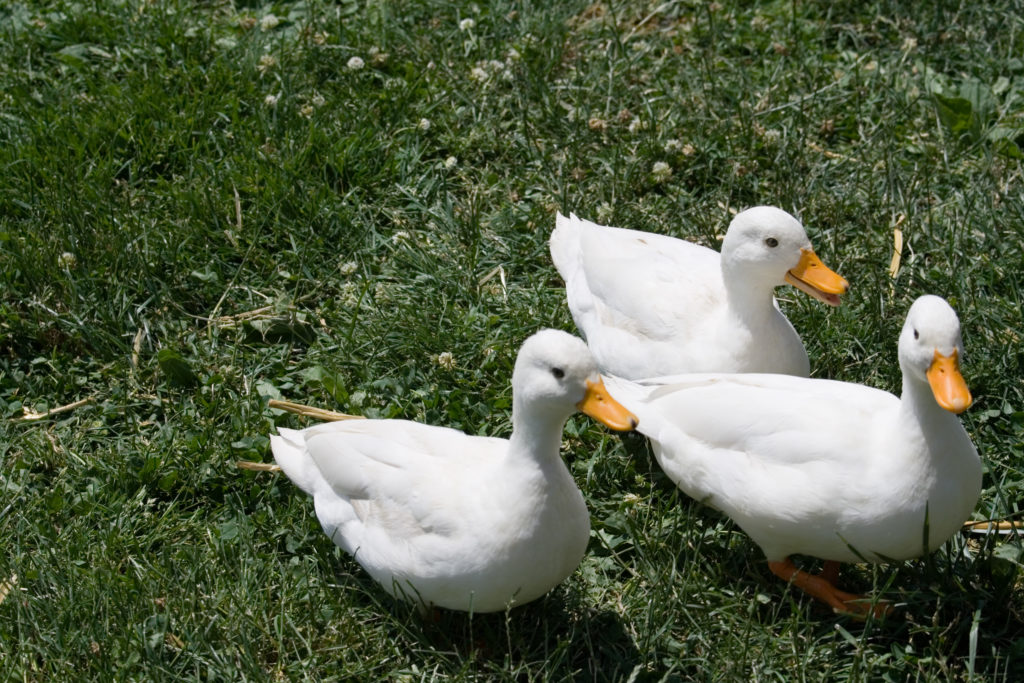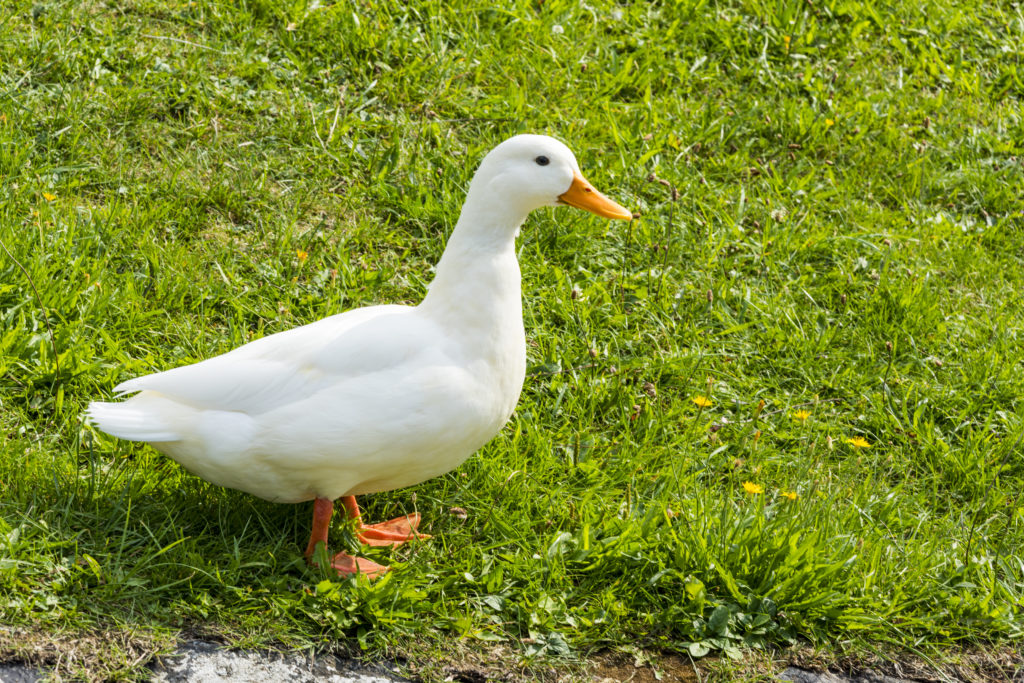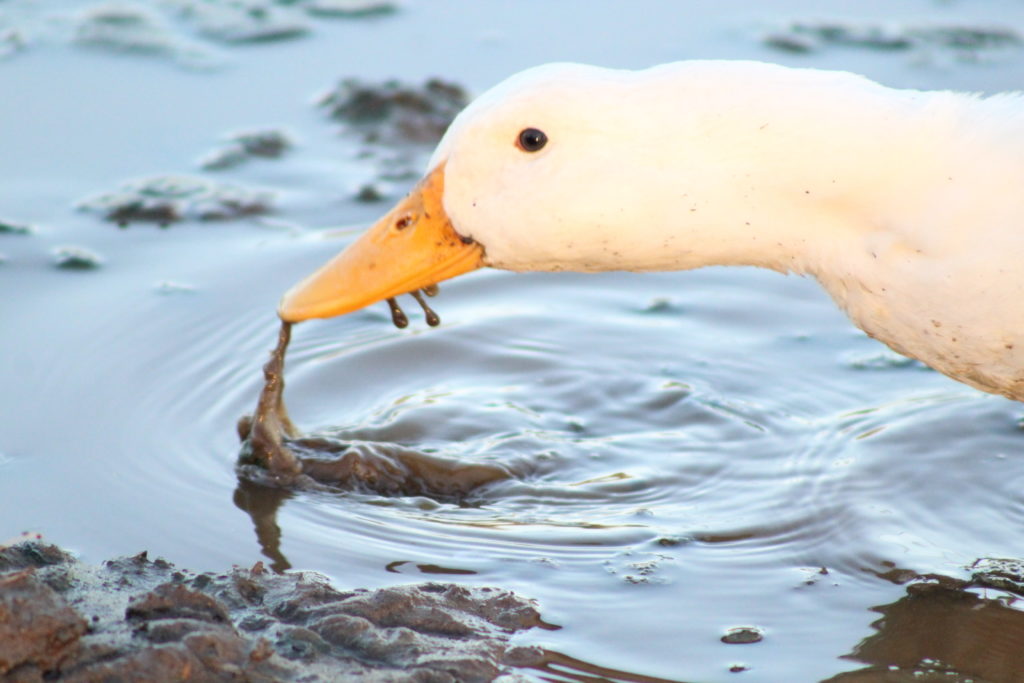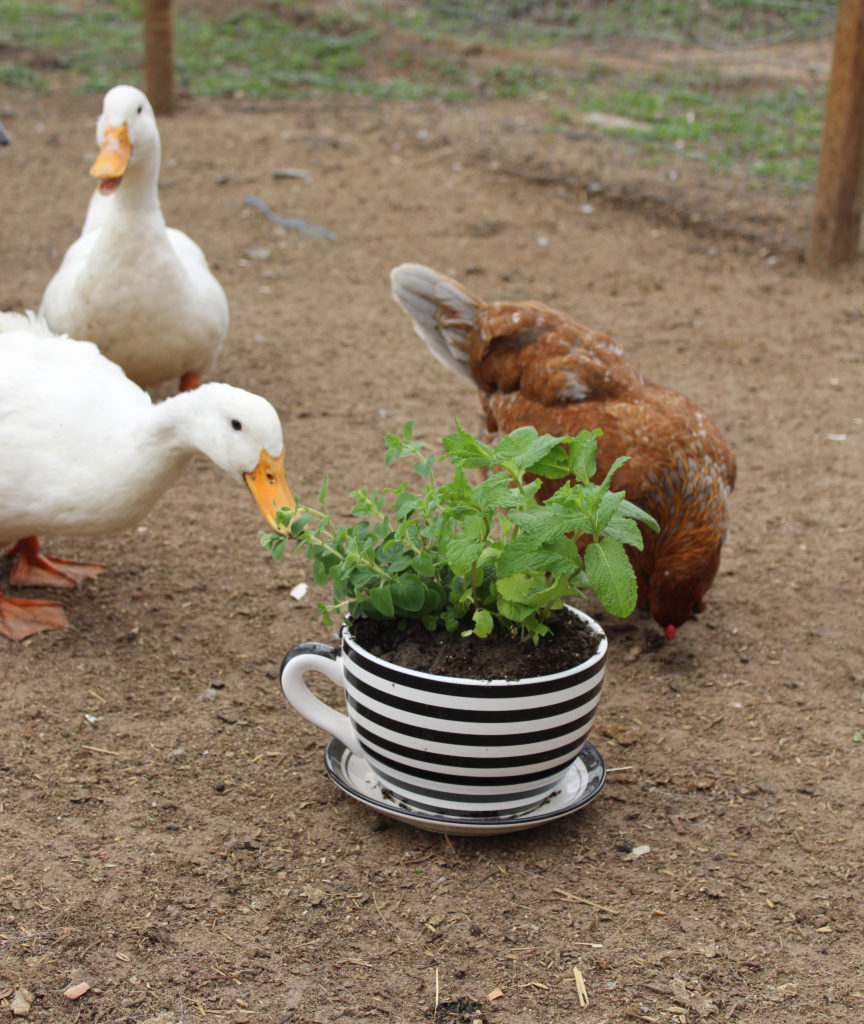Maat van Uitert shares her tips on creating an inviting duck habitat that will not only please your ducks, but may also increase their egg production in this Featured Article
Ducks make great pets: they’re a joy to watch in their pools, they’re full of personality, and their large eggs are a tasty addition to your cooking. We added ducklings to our backyard flock a few years ago and now we can’t imagine our farm without them. We’re continually upgrading their habitat to make it more inviting, keep them healthy, and increase their egg production.

Ducks lay their eggs best when they’re comfortable and happy in their homes. But our web-footed friends have specific needs that make them different from other types of backyard poultry. I’m going to show you how to create a duck habitat that’ll spark joy in your flock, increase their physical and mental health, and improve egg production!
Lots of Snack for Everyone
We’ve found that when we had 4 feed dishes for our flock of 15 ducks, they’d fight over their food, and even accidentally trample each other. Offering several feeding areas for everyone makes feeding time less stressful for our flock, as everyone gets a solid meal without having to fight for it. If their diets are deficient in protein, the hens are less likely to lay eggs. If there are too few feeding stations, they might also develop some bad habits, such as eating their own eggs for nutrients, or trying to gobble their food quickly, which might result in spilled and wasted food, or accidentally inhaling bits of grain.
Free-Choice Calcium for Stronger Eggshells
Laying ducks especially need extra calcium to lay strong eggshells. Nothing’s worse than waiting all winter for fresh duck eggs, only to watch them crack before you can use them. Adding one or two free-choice oyster shell feeders is a great idea. It’s easy to implement, and your flock can decide when they need an extra calcium boost.

It’s even easier when you use a gravity feeder. We built a free-choice gravity feeder using PVC pipes. It took us about 10 minutes to assemble the entire feeder. It also has caps on the end to keep rodents, insects, and rain out. It’s easy to clean, and each month, we fill it up with oyster shells and add more when needed. These kinds of feeder pipes also help reduce waste and mess in the duck coop, since less of the food gets spilled and trampled. The ducks love sneaking their bills in there for a bite of oyster shell.
If you don’t want to get fancy and build a DIY feeder, you can use a regular bowl from your local farm store, and refill as needed. You can also use a commercial feeder, like these. Whatever you use, just be sure it’s deep enough to accommodate your ducks’ bills.
Keep them entertained with floating treat feeder!
Environmental entertainment is critical to keeping ducks happy and engaged. As a general rule, ducks find it easier to eat food that’s floating on water. Their bills aren’t built for scratching and pecking like chickens, so digging through shallow dishes makes it hard for them to eat enough. In the wild, ducks scoop and filter their food through water and mud to get their nourishment. Floating treats on water creates a more natural environment for them. They’ll enjoy themselves by “hunting” for the goodies as they dip their bills into the water.

You can designate a couple of waterers to dispense floating treats such as dried river shrimp, which float easily, are full of protein, and enjoyed by ducks of all ages. You can also cut up leafy greens and scatter them on the surface of their water or pond, along with a variety of fruits such as strawberries, tomatoes, or mashed-up apples. Of course, you’ll still want waterers that are just for fresh, clean water.
If you’re not sure how to provide your ducks with a treat dispenser in their habitat, try these plans for a 5 gallon bucket waterer. The holes for the water are 1-inch wide, which is enough room for both water and tiny river shrimp to refill the water dish consistently. Make sure that the base of the waterer is wide and deep enough that the ducks can scoop with their bills. Add 2 to 3 cups of dried shrimp or other treats to 5 gallons of water. You can add more if you want; just make sure they don’t clog the drainage holes.
Enticing Nests Improve Egg Production
Ducks prefer to lay their eggs away from the rest of the flock in very quiet, out-of-the-way areas. One of our duck hens, Henrietta, used to love traveling a couple acres away from the flock to lay. It made us very nervous, but she demanded the peace and quiet.
Ideally, ducks love hiding under large bushes or trees. This might be a bit difficult to replicate in a coop, especially if you don’t want to crawl around on your hands and knees to ferret out duck eggs every day. One alternative is to use colorful plants like lavender or tall rosemary bushes, either planted permanently in the ground or as potted plants. Purple lilac bushes are another option that are safe for backyard poultry and other pets. The bright colors, inviting scents, and low-lying branches will attract your ducks, but the branches are easy to move so that you can spot and nab eggs. Potted plants are easily shifted from side to side.
Bushes and/or potted plants are a nice shady spot for your ducks as well, helping to reduce any summertime heat stress, which also improves egg production. But you don’t want the foliage to take up your whole coop or run, so consider placing the greenery against a fence.
If you aren’t fond of dirty eggs, keep the area very clean by using bedding such as pine shavings or straw. Replace or refresh the bedding at least 3 to 5 times a week. Then, recycle the bedding as part of your compost pile.
Add Herbs and Dried Flowers to Nests and Food.
The weeks when I’ve forgotten to add herbs to my flocks’ nesting areas are generally weeks when I don’t get very many eggs. There’s something about brand-new, fluffy bedding and sweet-smelling petals that attracts ducks to snuggle down and lay some large, golden-yolked eggs. More than once, I’ve even caught my drakes enjoying a stolen moment among the pine shavings!

In my experience, some wonderful options for herbs are rose petals, calendula, bee balm, peppermint leaves, and lovely purple peppermint flowers (these are also good for respiratory support), and sage. You can use fresh or dried nesting herbs but dried herbs are more shelf-stable and less likely to mold. Just be sure to remove them and the bedding, and refresh their nesting area, on a regular basis.
You can also add these herbs to your flock’s feed. My ducks are particularly fond of calendula and rose petals; they’re attracted to the color and the sweet taste. Peppermint and oregano are also favorites and the ducks love to sneak bites from the potted plants in their run! For feed, parsley is another option; it’s loaded with vital nutrients, and ducks love nibbling the green leaves.
Reducing the Number of Drakes.
While I love my colorful drakes, the truth is that too many drakes can lead to over mating, which increases flock stress. It can also lead to health issues for the hens such as back problems, gastric upset, feather loss, eye issues, trampling, or other injuries.
If your flock is a bit heavy on the drake side, and you’re not getting many eggs, it may be time to create a separate living area for the drakes, or reduce their number. Remember, you don’t need males for your lovely web-footed ladies to lay eggs.
As a general rule, it’s best to have 1 drake per 10 duck hens. If you notice your hens are experiencing stress, give them space away from the drake. While aprons seem like a good idea, not all ducks will happily wear them, and they prevent your flock from properly cleaning themselves.
Clean Pools and Misters for Hot Days.
Oh my, do ducks love their water! Especially in summer, my ducks will quack VERY loudly until their pool is full of H2O. Having easy access to a pool is critical to your duck flock’s mental and physical health.
During the hotter summer days, you can also provide extra pools to reduce the ambient heat. Misters are fairly inexpensive to install, and will also cool the area. Your flock will love playing and giving themselves a good wash!
I hope these low-cost, easily implemented suggestions have given you some ideas to enhance your ducks’ habitat. I’m sure they’ll also bring you more eggs and your flock more joy!
Maat van Uitert is the founder of the backyard chicken and duck blog, Pampered Chicken Mama, which reaches approximately 20 million backyard poultry enthusiasts every month. She’s also the founder of the Living The Good Life With Backyard Chickens store, which carries nesting herbs, feed, and treats for chickens and ducks. You can catch up with Maat on Facebook and Instagram .













5 Comments
Love your suggestions. Will see what I can do.
I am the proud mama of 3 Khaki Campbell girls. I once read that this breed isn’t as apt to enter the water as most ducks and they never tried to use the wading pool I set up for them last year, even when we placed them in it. Can you suggest other ways to help them stat cool?
Two suggestions: 1) You might try just picking up your ducks and putting them in the pool. Play with them and put some treats in the pool (things that will float). Campbells can and do swim/paddle just fine by choice. 2) You can try using misters.
Love this site! I have six 6 week old ducks so I don’t know the sex yet. Right now they are getting along great. I hope I have the right ratio of drakes to hens because I love all of them.
Thank you for your article on keeping ducks happy. There were some great ideas that I hadn’t run across before. I’m going online immediately to check out the price of misters.